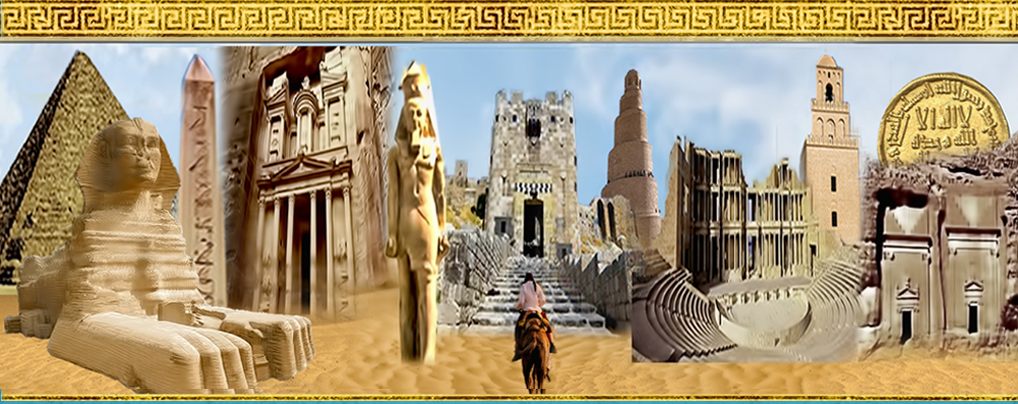Journal of the General Union of Arab Archaeologists

Abstract
(En)
Were the Muslims in ancient times highly proficient in mechanical engineering? Did they have a head start over the West in this field? Unfortunately, it is noticeable nowadays that Arabs and Muslims all over the world became just consumers; exploiting all technological developments of the West that are rapidly growing. Here we had to wonder whether the Arab Muslims, long ago, was in this manner. This research hypothesizes that Muslims had attained an advanced level of mechanical engineering and were the inventors of the self-moving artifacts; recently known as automata. Accordingly, this research has undertaken the mission to prove that assumption. This paper focuses on automata machines, in light of
«kitāb al-Ḥiyal» of the Muslim engineer al- Ǧazarī. This book -initially a manuscript- included a detailed description of these machines accompanied by painted illustrations known as «miniatures». The paper begins with a preface dealing with the meaning of fine technology and automata, followed by the story of automata since the antique ages and until the medieval epochs. The latter element is an indication of Muslims’ contributions to mechanical engineering in general, and automata in particular. This is supported by previewing samples on automata «self-moving» machines according to the miniatures of
«kitāb al-Ḥiyal ». This is followed by briefed biography of the book’s author al- Ǧazarī and a historical and artistic analysis of the book itself. Finally, there is a concise scientific analysis of the chosen samples of automata and their relevance to modern machines and advanced technology industries. Conclusively, concerning the value of «kitāb al-Ḥiyal» which is dated back to the 7th century AH/ 13th century AD, this research accentuated that automata machines are not a Western invention, they are an outcome of the Golden Age of the Islamic civilization, proving their supremacy in mechanical engineering since the medieval epochs.
(Ar)
اسهامات الهندسة الميكانيكية الإسلامية في تطوير الآلات ذاتية الحركة (في ضوء كتاب الحيل للجزري)
دراسة وصفية تحليلية
هل کان للعرب المسلمين قديما باع في علم الهندسة الميکانيکية؟ وهل کان لهم السبق على الغرب في هذا المجال؟ من الملاحظ حاليا أن العرب والمسلمين في شتى دول العالم -تقريباً- أصبحوا مجرد مستهلکون لما ينتجه الغرب في شتى المجالات، نتيجة لما وصل اليه الغرب من تقدم وتطور تکنولوجي مستمر ومتنامي بسرعة فائقة. وهنا کان لابد لنا ان نتساءل هل کان العرب المسلمين على هذا الحال قديما؟ يقوم هذا البحث على اثبات فرضية أن العلماء المسلمين قد حققوا تقدماً کبيرا في مجال الهندسة الميکانيکية، واستطاعوا ابتکار آلات ذاتية الحرکة، والمعروفة حديثاً بـ »الأتمته«. ووفقاً لذلک، کان الهدف الأساسي لهذا البحث هو إثبات صحة هذه الفرضية. يتناول هذا البحث بعض نماذج من الآلات ذاتية الحرکة؛ وذلک من خلال کتاب »الجامع بين العلم والعمل النافع في معرفة الحيل الهندسية« لمؤلفه العالم المسلم الجزري. تضمن الکتاب - في الأصل مخطوط - وصف تفصيلي لهذه الآلات الميکانيکية ذاتية الحرکة، وکيفية تنفيذها مشفوعا بالتصاوير الملونة المعروفة اصطلاحاً بـ »المنمنمات«. تتکون خطة البحث من تمهيد يتناول التعريف بما يصطلح عليه التکنولوجيا الدقيقة والأتمته » الآلات ذاتية الحرکة«، ويلي ذلک تاريخ الأتمته بدءا من العصور القديمة وحتى العصور الوسطى. کما سيتناول البحث إسهامات علماء المسلمين في مجال الهندسة الميکانيکية بشکل عام، وفي مجال انتاج الآلات ذاتية الحرکة بشکل خاص، مدعوما باستعراض نماذج للآلات ذاتية الحرکة تم شرحها ضمن »کتاب الحيل«. ويلي ذلک السيرة الذاتية للعالم المسلم اسماعيل بن الرزاز الملقب بـ »الجزري «، بالإضافة إلى تحليل تاريخي وفني موجز عن المخطوط محل الدراسة. وفي النهاية سيتم عمل دراسة تحليلية للنماذج المختارة من الآلات ذاتية الحرکة وعلاقتهم بالآلات الحديثة والصناعات التکنولوجية المتطورة. وفي المجمل واستنادا على »کتاب الحيل«، والذي يعود تاريخه للقرن ٧هـ/ ١٣م تمکن هذا البحث من التدليل على أن الآلات ذاتية الحرکة ليست اختراعاً غربياً؛ بل هي نتاج الحضارة الإسلامية، ودليل ملموس على مدى تفوقهم في مجال الهندسة الميکانيکية منذ العصور الوسطى
Recommended Citation
Zidan, Dr.Boussy Muhammad
(2021)
"CONTRIBUTIONS OF MUSLIM MECHANICAL ENGINEERS IN MODERN AUTOMATA (IN THE LIGHT OF KITĀB AL-ḤIYAL OF AL- ǦAZARĪ) A DESCRIPTIVE AND ANALYTICAL STUDY,"
Journal of the General Union of Arab Archaeologists: Vol. 6:
Iss.
2, Article 8.
Available at:
https://digitalcommons.aaru.edu.jo/jguaa/vol6/iss2/8

